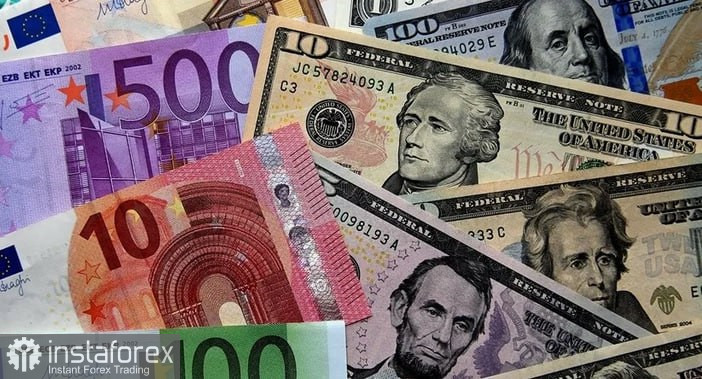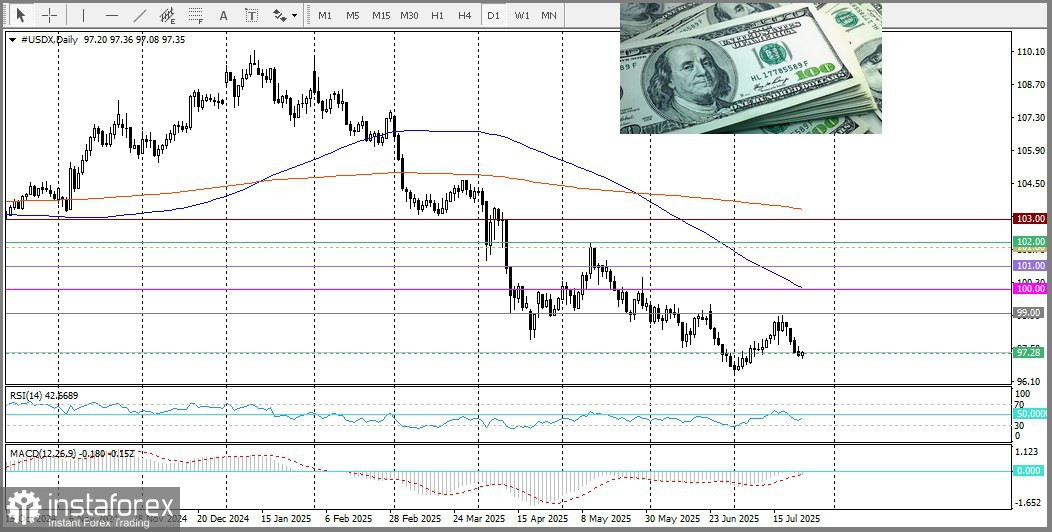
Today, the pair is retreating from its daily high. According to European Commission officials, the EU and the US are close to reaching an agreement that would include 15% tariffs on eurozone products, with exemptions for aircraft, medical equipment, and alcoholic beverages. This agreement would help avoid the previously announced 30% tariffs by U.S. President Donald Trump earlier in July, and more importantly, prevent a series of retaliatory measures from the EU that could escalate into a trade war.
Macroeconomic data from the eurozone remains mixed. The GfK consumer sentiment survey in Germany for August confirmed weak momentum in the eurozone's largest economy, while the preliminary HCOB Purchasing Managers' Index (PMI) showed business activity rising above expectations.
On the dollar side, support may come from reduced concerns about Federal Reserve independence following comments by U.S. Treasury Secretary Scott Bessent. He noted that a nomination for a new Fed Chair would likely be announced in December or January, emphasizing that "there is no rush" in the matter. These remarks reduce the uncertainty surrounding monetary policy and could support the dollar. 
At the same time, market focus is on next week's Fed meeting, where rates are expected to remain unchanged, with a possible cut only in October.
An additional pressure factor comes from President Trump's announcement of new tariff plans. He stated that tariffs would start at a minimum of 15%, with the overall range potentially reaching 50%. These comments point to a shift toward a more aggressive U.S. tariff policy against trading partners, which may increase volatility in the currency markets and influence dollar dynamics.
Overall, the market remains in a wait-and-see mode. Investors and traders should monitor upcoming PMI releases, the Fed's policy decisions, and the progress of trade talks and tariff measures. These elements will determine the near-term direction of the DXY index and the U.S. dollar.
From a technical perspective, today's high has acted as immediate resistance around 1.1780, with 1.1750 serving as the nearest support. Further support lies at the psychological level of 1.1700, a break below which could accelerate the decline. However, since oscillators on the daily chart remain positive, the pair is not yet positioned to extend its drop — especially given preliminary expectations that the ECB will leave its rate unchanged. The 1.1800 level remains the next upward target, above which the pair could aim for the July high.
 English
English 
 Русский
Русский Bahasa Indonesia
Bahasa Indonesia Bahasa Malay
Bahasa Malay ไทย
ไทย Español
Español Deutsch
Deutsch Български
Български Français
Français Tiếng Việt
Tiếng Việt 中文
中文 বাংলা
বাংলা हिन्दी
हिन्दी Čeština
Čeština Українська
Українська Română
Română

